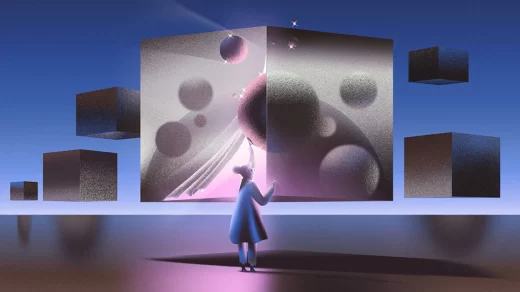The phenomenon of nostalgia, and its status in the internet age has been a regular point of discussion and thought in many of my blog posts this semester; so much so that I wanted to dedicate my post this week on the topic.
As a kid of the early two-thousands, my childhood ensued during the end of the ‘early’ internet age. A time of clunky CGI movies, the final fits and starts of dial up internet and the former luxury of a strict one hour of TV a day. In some of my previous blogs such as Beyond the Blue sky and The Age of (Re)Discovery I discussed the popularity and impact of older forms of media and pop culture within the modern internet age.
Ultimately much can be gleaned from our current and fascinating obsession with ‘Nostalgic’ content which has become a popular sub-topic, mainly on apps like TikTok. Nostalgia content takes many shapes and forms. A popular format is a ‘POV’ video with the use of the photo carousel option, usually with the theme of a certain generational, and often geographical experience. For example, I often get have POV videos themed around Australian primary schools of the early noughties showing up on my feed, with an at times eerily specific video summary of the typical public-school experience. One video, made by a nostalgia content creator ‘Milennial Aussie’ has 313.4K likes. The over 5,000 comments are filled with users reminiscing on their childhoods, and others heatedly debating whether the images were more representative of the nineties.
For every Millennial and Gen Z, there seems to be a pocket of TikTok which addresses the niche interests, hobbies, toys, and memories of their childhood. For me, my nostalgia algorhythm focuses in on the early animated Barbie movies that I watched repeatedly as a child, or the Nintendo DS games I obsessively played. Though consuming nostalgia content, I quickly found whole groups of people who shared specific core memories, sensory experiences, and childhood passions.
In another previous post, I observed the emergent concept of Collective Memory fuelled by the internet age; specifically, in regard to how communities tell and disseminate histories in an age of constant interconnection and rapidly changing ways of learning about and viewing the world. Perhaps more dominant in the scheme of collective memory is the revisiting of pop-cultural phenomena; the specific foods we ate at school, shows we watched and games we played. In an era arguably instilled with a sense of socio-political fragmentation, perhaps our shared internet nostalgia helps us find connection and unity. Then there’s the paradox of our yearning for a ‘simpler’ time of little to no internet use on an app like TikTok. Our collective memory seems so stretch farther than we can conceive, perhaps feeding into and shifting the ways we perceive the most foundational years of our lives.



Its interesting to observe that this trend is fuelled by users and the algorithm. If nostalgic posts garner more interaction then such content will be promoted. I can relate to the nostalgia of a simpler time and the irony associated with reliving an offline world through a digital medium. In a way social media is able to recall and reanimate cultural phenomena from the past to provide a sense of belonging and comfort.
Honestly I do not think this phenomenon is entirely because of nostalgia. Nostalgia was always present in the internet as it was in culture in general. What is interesting in media nowadays is that creators lean towards already used characters and stories instead of creating new worlds. I think this is fairly understandable, it is less effort for the audience to follow a story they already know. Moreover, creators can still explore new storylines using old characters and worlds, e.g. Barbie. But to me this seems like a strategy to maximise profit because existing stories are more advantageous in the market compared to new ones. This is why I do not think we demand more nostalgic content but that both audience and creators sometimes decide to play safe and choose familiarity over innovation.